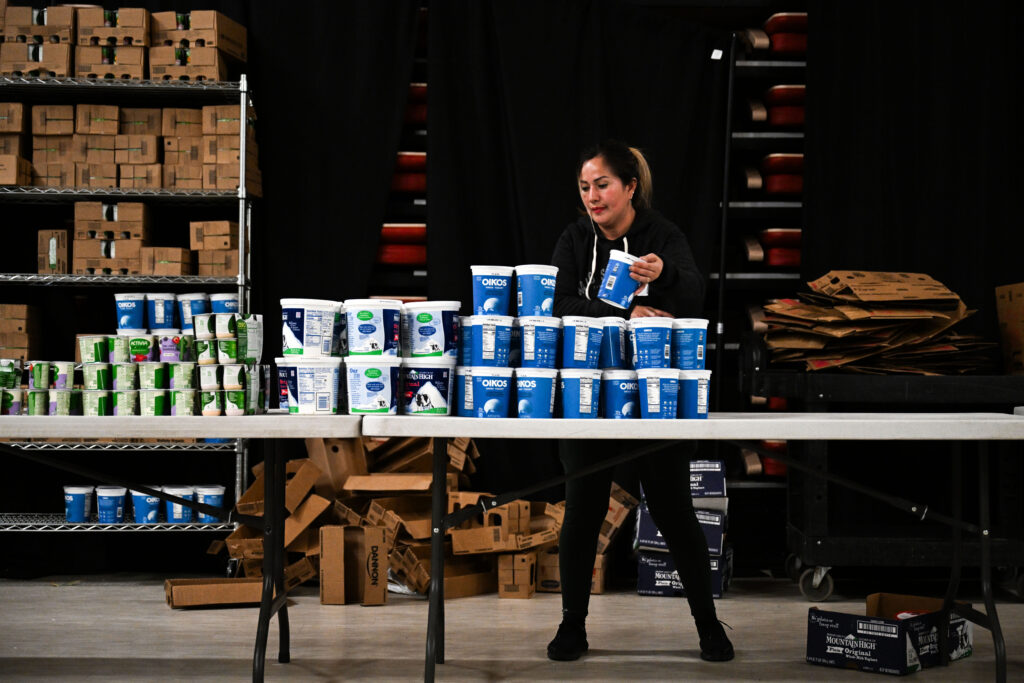The affordability election redux | CRONIN & LOEVY

Pollsters and strategists in 2024 told Donald Trump inflation and cost of living were two of the best issues to campaign on in the 2024 presidential election.
Not surprisingly, he promised to lower the price of groceries and make things more affordable.
And he narrowly won the popular vote in 2024 by 49.8% to 48.3%.
It was not a landslide or a mandate. He beat a weak and wounded last-minute improvised Democratic ticket led by then-Vice President Kamala Harris. But he has acted as if he had won a landslide — contrary to the data.
Inflation has come down: depending on where you live, the prices of eggs and gasoline, are modestly lower. But they are still higher than they used to be. Meanwhile insurance rates, health care costs, housing and coffee are more expensive. Amazon and Target prices are also higher.
Stores everywhere are justifying price increases by pointing to new or pending tariffs proposed by President Trump. Housing costs are rising because so much of the housing materials are imported and their prices raised by the tariffs.
Also, housing construction crews have often been staffed by illegal aliens who, thanks to new policies, are scarcer these days.
Pollsters advised Democratic candidates running for office this year — 2025 — to campaign saying they would work harder to make life more affordable and would fight for childcare, housing affordability and curbing health care costs.
As a result, Democrats did very well in Tuesday’s midterm general elections.
Key elections were held in New Jersey and Virginia. They are both “bluish” (somewhat Democratic) states. Yet Virginia has just had a popular moderate Republican governor the past four years. And moderate Republican Chris Christie was a two-term governor in New Jersey a few years ago.
Attractive moderate female Democrats won election in those two states. Democrat Abigail Spanberger was elected governor of Virginia and Democrat Mikie Sherrill was elected governor of New Jersey.
Both Spanberger in Virginia and Sherrill in New Jersey did far better than Democrat Kamala Harris did running for president one year ago. Both Spanberger and Cheryl were popular with young male and Hispanic voters. And the two won handily among independent voters.
In the conservative state of Georgia, two Democrats won upset victories for the state Public Utility Board. The issue in the election was rising electricity costs, another affordability issue.
Democrats won legislative and judicial elections in several other states. And an anti-Trump referendum on gerrymandering policy won a 2-to-1 victory in California — where Gov. Gavin Newsom won a surprisingly strong rebuke to Trump’s efforts to retain a Republican Congress.
Why did the Democrats do so well? And what explains this “Trump slump”?
President Trump acknowledged the U.S. government shutdown, fueled by a stalemate about medical care funding, hurt him and the Republican Party in the 2025 election. Trump also said the Republicans did less well because his name was not on the ballot.
He is probably right in thinking that, but there are additional factors.
President Trump deserves credit for making our southern border far more secure and for helping to end the war in Gaza between Israel and the Hamas faction of Palestinians.
Yet he has seemed more preoccupied with running for the Nobel Peace Prize, building a big new ballroom and gilding the White House than with making life more affordable for the have-less and working-class Americans. His recent tax cut bill definitely favors wealthy people.
Average Americans — especially younger Americans — worry about making ends meet. Younger Americans are finding it is cheaper to rent than to buy a home. They are understandably frightened by rapidly rising insurance rates on everything.
Average Americans are facing rising health care prices and the fiscal effects of Trump’s tariffs. They are wondering what AI (artificial intelligence) will do to their jobs and their cost of living.
Meanwhile, Trump says Democrats do not have the right to the affordability issue. He says they are engaged in a “con job” and he is the one bringing costs and inflation down.
Trump in effect is saying Democrats have stolen his “affordability leadership issue.”
He is right in a way. Democrats have talked about and seized the affordability issue much more than they have presented concrete programs and workable solutions. But Trump’s boasts aren’t back up by data.
New York Mayor-elect Zohran Mamdani, a Democratic Socialist, has offered solutions, but they are mainly “tax the rich” pledges.
Mamdani is a telegenic TikTok-style candidate who is a captivating speaker. He mobilized young and ethnic volunteers in a dramatically effective way. But he has set a seemingly high bar for himself.
His spellbinding acceptance speech lacked grace toward his defeated opponents and lacked a unifying narrative. He will need all the help he can get to govern America’s largest and most complicated city.
Mamdani also needs to remember the snarky quip about socialism: “The problem with socialism is that it doesn’t work when you run out of other people’s money.” And most Americans see the Soviet Union, Cuba and North Korea as failures.
Mamdani is young and untested. He will rule a city half-full of skeptics about him. He must find a way to collaborate with the large Jewish population and the large number of apartment owners (who do not like his proposal to freeze rents).
We hope he can make New York more affordable, but he has a lot to prove.
Republican strategists are gleefully trying to portray the Democratic Party as having moved way left, and Zorhan Mamdani is their new face and new leader. It makes sense for the Republicans to do so.
But the Democrats who won elsewhere last Tuesday suggest a more moderate Democratic Party.
Bottom line: The “affordably issue” won last Tuesday, as it did a year ago when Trump narrowly won the presidency.
The challenge now is: can and will national leaders in both parties seriously and effectively address the “affordability issue” without adding to the already frightening national debt.

Meanwhile, in Colorado
Here in Colorado, the big news is the strong voter support for adopting {ropositions LL and MM by near landslide margins.
The two propositions continue public school free breakfast and lunch programs in place and operating successfully for the past three years.
Proposition LL empowers public schools to retain extra tax revenue for free breakfasts and lunches that otherwise, under Colorado law, would have had to been returned to the taxpayers. The funds to be returned totaled $12 million.
Proposition MM increases taxes on taxpayers with Adjusted Gross Incomes (AGI) of more than $300,000 per year to pay for free public-school meals. It also calls for fresh local food products to be on public school menus and provides a wage raise for public school cafeteria workers.
The percentages of the vote for these two propositions were high. Proposition LL passed with about 66% YES and 35% NO. That is almost 2 to 1.
Proposition MM’s percentage was closer, yet still substantial at about 59% YES and 41% NO. We attribute the higher percentage vote for Proposition LL to the fact MM provided for an increase in taxes, an idea unpopular in Colorado politics.
Colorado voters have traditionally been anti-tax and anti-having government pay for goods and services citizens can easily afford to pay for themselves. But those ideas have been readily pushed aside by the popularity of free breakfasts and lunches for public-school students, regardless of financial need.
Apparently, parents at all economic levels like the convenience of parents, particularly mothers, not having to fix breakfast and make a portable lunch for their K-12 public school student children.
Another Colorado 2025 election result of interest was the vote in the Denver suburb of Littleton to disallow multiplexes — such as duplexes, triplexes and quadraplexes — and similar types of multi-family housing in single-family home neighborhoods.
The ballot issue passed with substantial support.
The issue was put on the ballot in Littleton in response to an effort by Colorado Gov. Jared Polis and the Democratic Party majority in the state legislature to force increased density into single-family zones in cities on the Front Range of Colorado.
Proponents of “density” argued forcefully shoving multi-family into single-family neighborhoods would provide more affordable housing options and give that decision to homeowners themselves.
Critics argued back it would alter the character of single-family homes and undercut what homebuyers anticipated when they initially purchased their homes.
A citizen group formed in Littleton and garnered enough signatures to place “keeping single-family only single-family” on the ballot.
Mark Harris, a spokesperson for those supporting the ballot issue, said:
“This is about neighborhoods and homes and what you want your neighborhoods to be like in the future… Homeowners have raised their voices here in Littleton. They like their neighborhoods, and they want them to stay the way they are. They don’t want blanket density of multiplexes throughout our town.”
Tom Cronin and Bob Loevy write about Colorado and national political issues.













